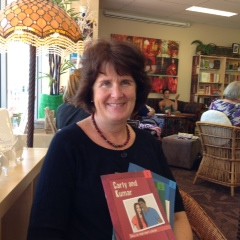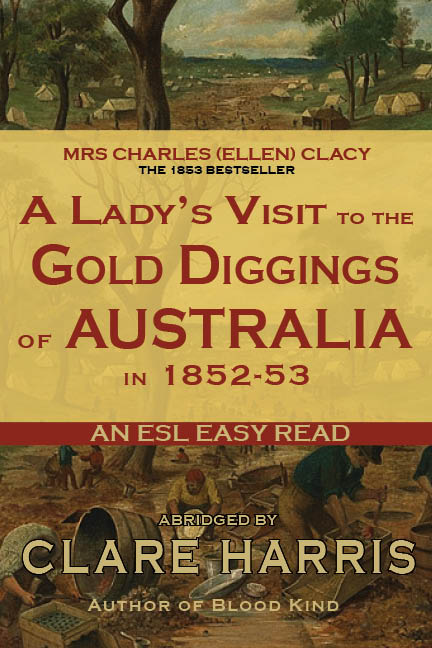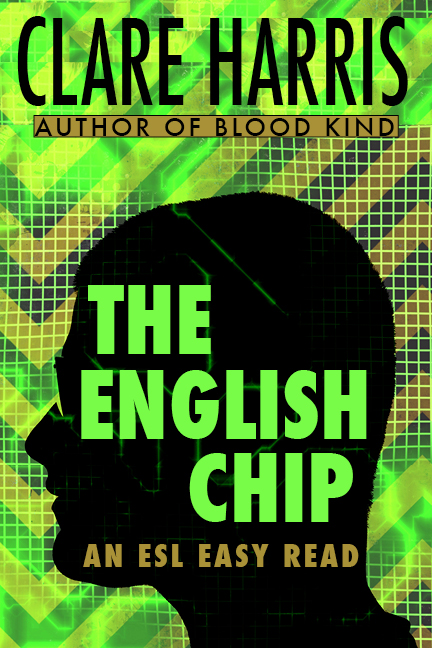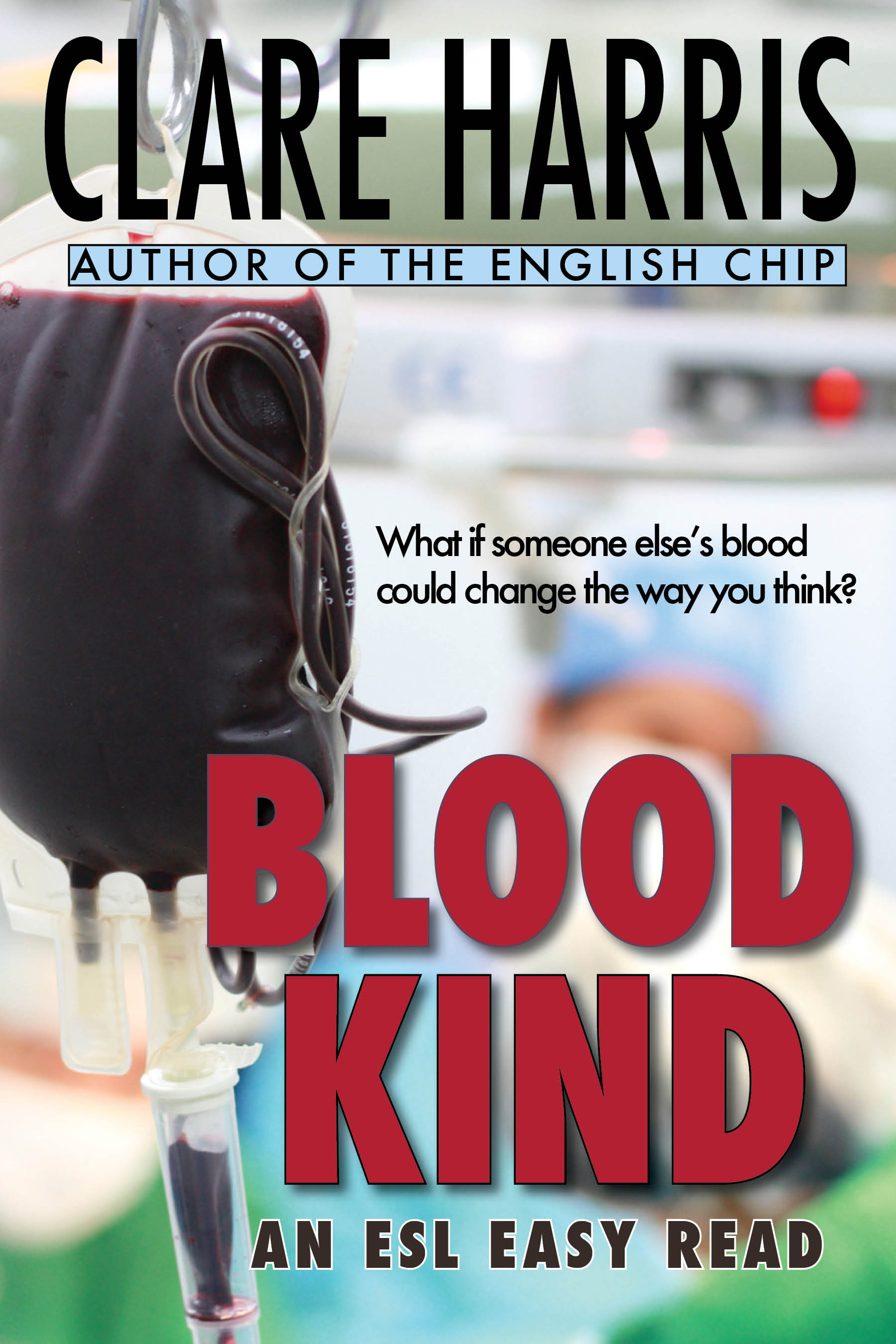Meet Karen Slikas Barber, author of Carly and Kumar (Read Me Again Press, 2013).
Karen, tell us about Carly and Kumar – your short stories about Carly and her housemate Kumar. You were inspired by George and Nina and Jeff and Lisa, right?
That’s right. I was working with a multi-level class, and they enjoyed stories that were funny, short, and about everyday life.
I like the fact that Carly and Kumar are young people, dealing with all the issues that young people face. You’ve kept it light, however…
A lot of students I encounter have had enough difficulty in their lives, and enjoy reading something lighthearted. I try to write about situations that students might have encountered, or that their friends might encounter. Everyday life can be quite profound, too.
The series offers the same set of stories, but at three levels. Did that idea come from the multilevel class?
Yes, but even in a one-level class, I always find there’s a range of reading levels. The three-level system, with audio support for elementary level, gives everyone a chance to participate and discuss the same story – or to read the stories again at the next level.
Hence the name of your publishing house, Read Me Again Press?
Exactly – plus the fact that I love to read good books over and over again!
There are no worksheets, just limited number of questions…?
That’s what I liked about Jeff and Lisa. I want students to understand that reading can be for pleasure, that it isn’t just about answering huge sets of questions. I want ER (Extensive Reading) to look quite different from classroom-based intensive reading.
You’re really committed to ER?
Yes! My other source of inspiration comes from the ER experts, like Richard Day and Julian Bamford, authors of that seminal book, Extensive Reading in the Second Language Classroom, and Paul Nation and Gillian Claridge in New Zealand. But I think it’s important to realise that we may need to train students to become readers, that successful ER doesn’t happen automatically. Gillian Claridge found that learners always had a tendency to choose books that were above their reading level …
Which leads to the ‘choose a book, read 3 pages, give up’ syndrome?
Exactly. Paul Nation suggests that for really effortless ER, 98% of the words need to be known to learners. It helps develop fluency, when you work with the language you already know.
How do you deal with this need for training for learners?
I did a 30-week research project on supporting students with ER, so look out for my article in the next 2014 edition of TESOL in Context. There are suggestions for teachers in the front of the Carly and Kumar books, with step by step instructions in my new book and on the website.
What kind of feedback have you had from learners?
The best feedback is seeing that students ‘get it’ – that they smile and laugh when they read the stories. The girls love Kumar, and guys think Carly is wonderful. Then they have lots of opinions about the characters’ lives – for example some say girls shouldn’t live in share houses with boys, while others think it’s a new idea but sounds fun, and for a few it’s no problem. For me that’s the best kind of feedback, that students get to know the characters, meaning that they can predict what might happen next, and reading then becomes even more enjoyable.
I’ve seen the books, and the production values are great… but self-publishing takes a lot of work. What kept you going?
I expected it to be a lot of work. The hardest thing was making those final editing decisions, like whether I could use ‘gotten’ (my kids and their friends say it all the time), whether I should use contractions, that kind of thing.
What about your earlier readers, like Bad Hair Day and A Snag Free Barbie? Are they still available?
They’re not available in print any more, but you can read the stories and audio, free…
How about Carly and Kumar? Is there a sample online?
Yes, you can download samples at all three levels from the website.
You mentioned a new book?
Look out for More Carly and Kumar Stories, at Level 2
Good luck with it all. Has it been worthwhile?
Once you see students enjoying reading, you realise that it’s all worthwhile.










2 responses to Carly and Kumar – Extensive Reading with attitude
my students adore the Carly and Kumar series. I tried to download the Bad Hair Day and A snag Free Barbie but I got a ‘page not found’ error message. Could you give me another link?
Thanks
Hello, Elizabeth – and sorry for the delay in replying! Thanks for letting me know – you are so right – they must have updated their site. I found this link to Central AMEP materials instead: hope it works for you!
Comments are closed.